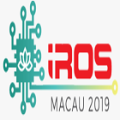This technical report presents our solution for the RoboSense Challenge at IROS 2025, which evaluates Vision-Language Models (VLMs) on autonomous driving scene understanding across perception, prediction, planning, and corruption detection tasks. We propose a systematic framework built on four core components. First, a Mixture-of-Prompts router classifies questions and dispatches them to task-specific expert prompts, eliminating interference across diverse question types. Second, task-specific prompts embed explicit coordinate systems, spatial reasoning rules, role-playing, Chain-of-Thought/Tree-of-Thought reasoning, and few-shot examples tailored to each task. Third, a visual assembly module composes multi-view images with object crops, magenta markers, and adaptive historical frames based on question requirements. Fourth, we configure model inference parameters (temperature, top-p, message roles) per task to optimize output quality. Implemented on Qwen2.5-VL-72B, our approach achieves 70.87% average accuracy on Phase-1 (clean data) and 72.85% on Phase-2 (corrupted data), demonstrating that structured prompting and spatial grounding substantially enhance VLM performance on safety-critical autonomous driving tasks. Code and prompt are available at https://github.com/wuaodi/UCAS-CSU-phase2.
翻译:暂无翻译



